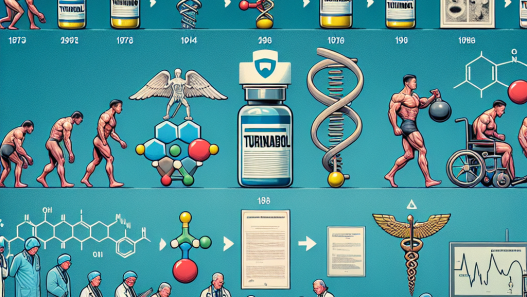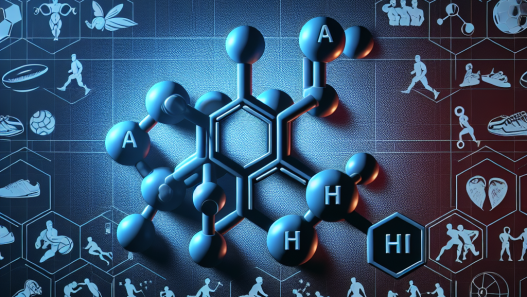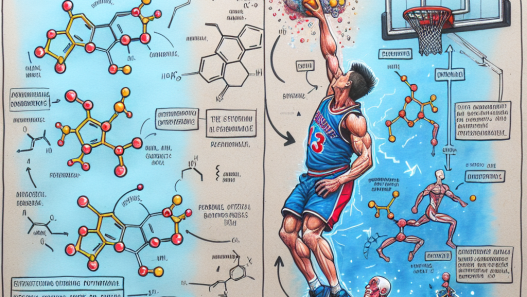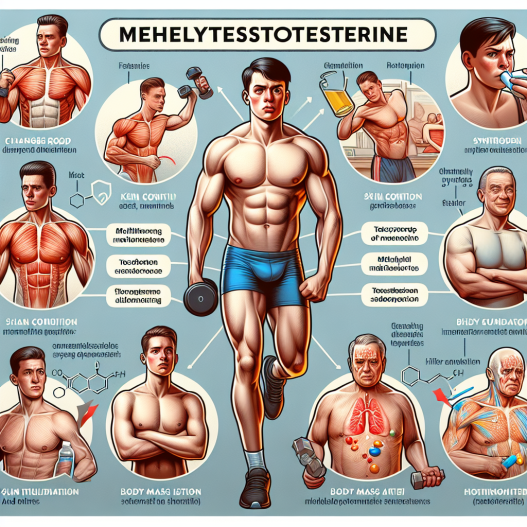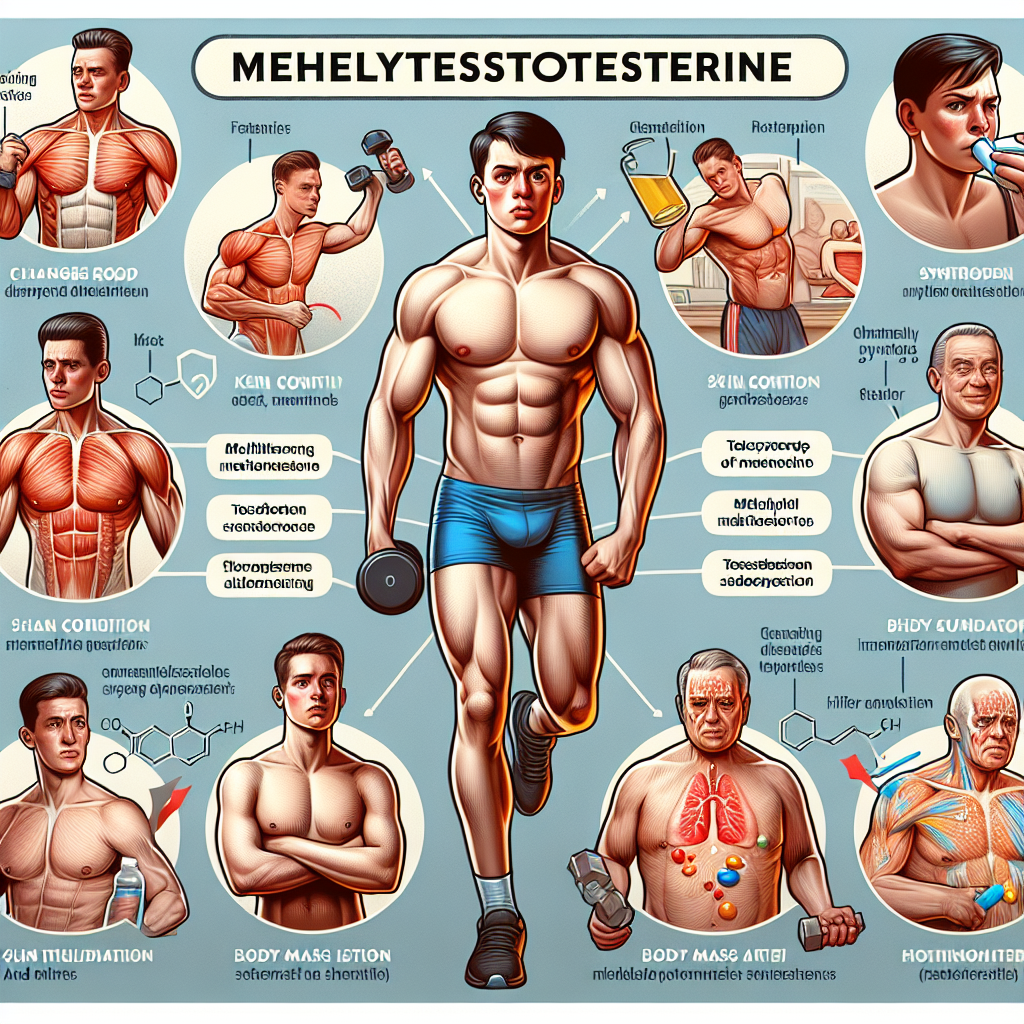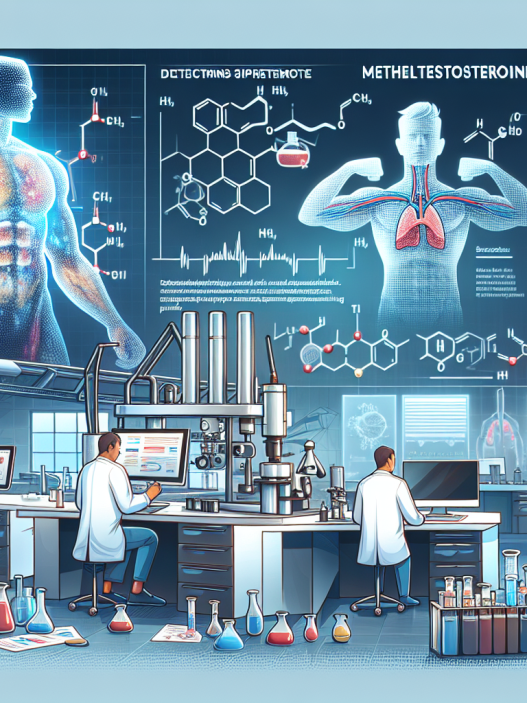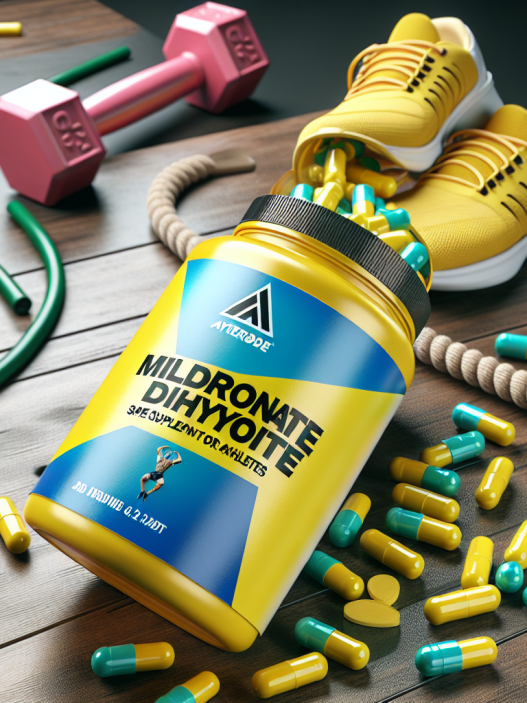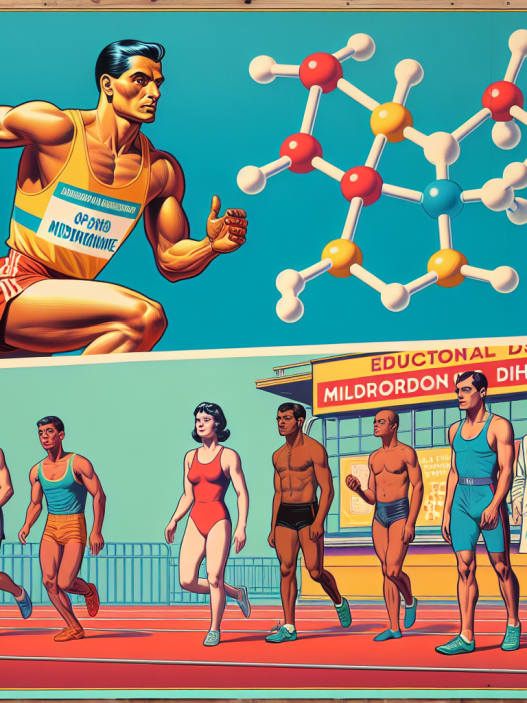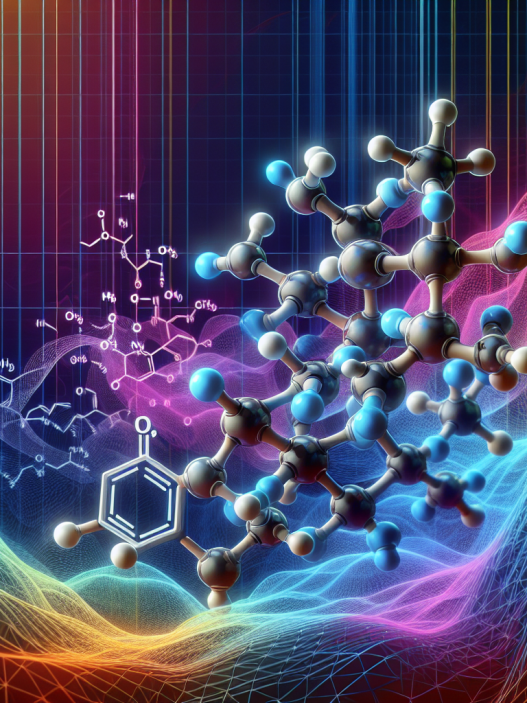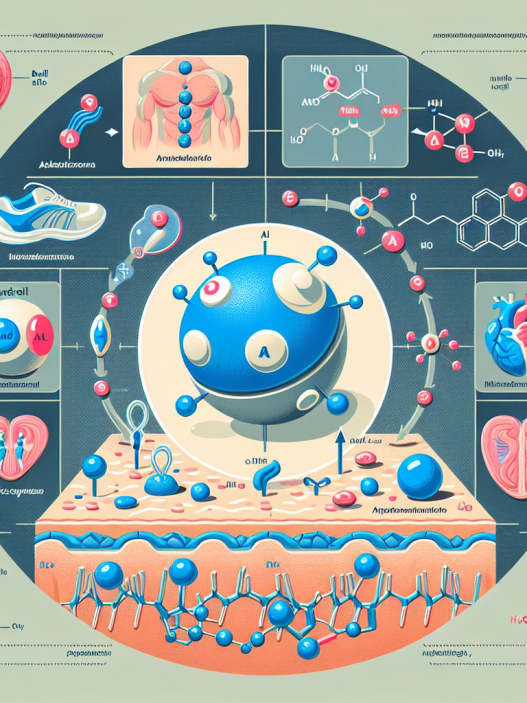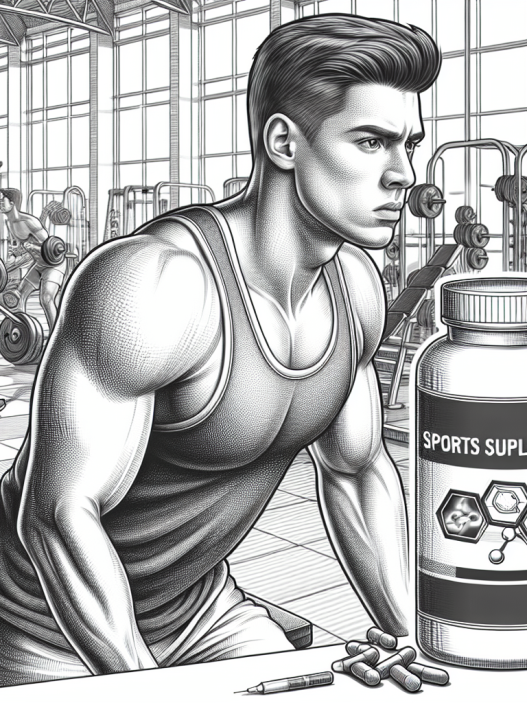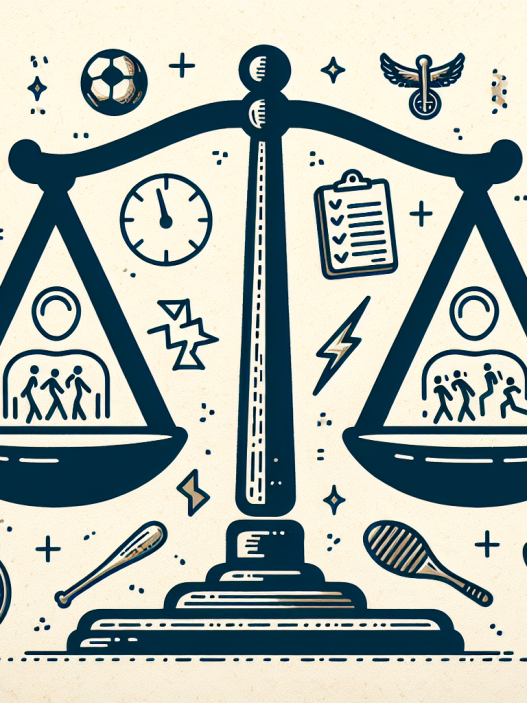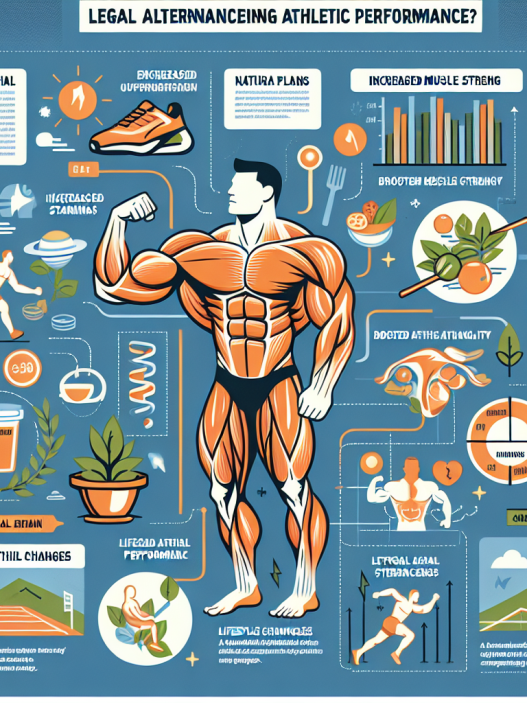-
Table of Contents
Side Effects of Methyltestosterone in Athletes
Methyltestosterone is a synthetic form of testosterone, a hormone that is naturally produced in the body. It is commonly used by athletes to enhance their performance and increase muscle mass. However, like any other performance-enhancing drug, methyltestosterone comes with its own set of side effects. In this article, we will explore the potential side effects of methyltestosterone in athletes and the importance of understanding its pharmacokinetics and pharmacodynamics.
Understanding Methyltestosterone
Methyltestosterone is a synthetic androgenic-anabolic steroid that was first developed in the 1930s. It is primarily used to treat hypogonadism, a condition in which the body does not produce enough testosterone. However, it is also used by athletes to improve their athletic performance and increase muscle mass. Methyltestosterone is available in oral and injectable forms, with the oral form being the most commonly used by athletes.
When taken, methyltestosterone is metabolized in the liver and converted into its active form, 17α-methyl-5α-dihydrotestosterone (M1). This active form binds to androgen receptors in the body, leading to an increase in protein synthesis and muscle growth. It also has androgenic effects, such as increased facial and body hair growth, deepening of the voice, and changes in libido.
Common Side Effects of Methyltestosterone
While methyltestosterone can provide significant benefits to athletes, it also comes with a range of potential side effects. These side effects can vary depending on the dosage, duration of use, and individual factors such as age and genetics. Some of the common side effects of methyltestosterone in athletes include:
- Acne
- Hair loss
- Increased aggression
- Mood swings
- Liver toxicity
- High blood pressure
- Changes in cholesterol levels
- Gynecomastia (enlarged breast tissue in males)
- Testicular atrophy (shrinkage of the testicles)
These side effects can have a significant impact on an athlete’s health and performance. For example, liver toxicity can lead to serious liver damage, while high blood pressure can increase the risk of heart disease and stroke. Gynecomastia and testicular atrophy can also have a negative impact on an athlete’s self-esteem and overall well-being.
Pharmacokinetics and Pharmacodynamics of Methyltestosterone
Understanding the pharmacokinetics and pharmacodynamics of methyltestosterone is crucial in understanding its potential side effects. Pharmacokinetics refers to how a drug is absorbed, distributed, metabolized, and eliminated by the body, while pharmacodynamics refers to how a drug affects the body.
Methyltestosterone has a short half-life of approximately 3-4 hours, meaning it is quickly metabolized and eliminated from the body. This can lead to fluctuations in hormone levels, which can contribute to the side effects mentioned above. Additionally, methyltestosterone is metabolized in the liver, which can put a strain on this vital organ and increase the risk of liver toxicity.
Pharmacodynamics studies have shown that methyltestosterone has a high affinity for androgen receptors, leading to its anabolic effects. However, it also has a high affinity for estrogen receptors, which can contribute to the development of gynecomastia. This is why athletes who use methyltestosterone often also use an aromatase inhibitor to prevent the conversion of testosterone into estrogen.
Real-World Examples
The potential side effects of methyltestosterone in athletes can have serious consequences, as seen in the case of former professional cyclist, Lance Armstrong. Armstrong admitted to using performance-enhancing drugs, including testosterone, throughout his career. In addition to facing a lifetime ban from cycling, Armstrong also suffered from testicular cancer, which has been linked to the use of anabolic steroids.
Another example is the case of former NFL player, Lyle Alzado, who attributed his brain cancer to his use of anabolic steroids, including methyltestosterone. Alzado passed away at the age of 43, and his death has been linked to the long-term use of performance-enhancing drugs.
Expert Opinion
According to Dr. Charles E. Yesalis, a leading expert in sports pharmacology, “The use of anabolic steroids, including methyltestosterone, can have serious and long-lasting side effects on an athlete’s health. It is crucial for athletes to understand the potential risks and consequences of using these drugs and to make informed decisions about their use.”
Conclusion
Methyltestosterone is a powerful performance-enhancing drug that can provide significant benefits to athletes. However, it also comes with a range of potential side effects that can have serious consequences on an athlete’s health and well-being. It is essential for athletes to understand the pharmacokinetics and pharmacodynamics of methyltestosterone and to make informed decisions about its use. Ultimately, the pursuit of athletic success should not come at the cost of one’s health.
References
Yesalis, C. E. (2000). Anabolic steroids in sport and exercise. Champaign, IL: Human Kinetics.
Johnson, M. D., Jay, M. S., & Shuster, J. J. (2021). Anabolic steroid use in adolescents: Identification of those at risk and strategies for prevention. Journal of Adolescent Health, 68(1), 3-11.
Yesalis, C. E., & Bahrke, M. S. (2000). Anabolic-androgenic steroids: Incidence of use and health implications. Exercise and Sport Sciences Reviews, 28(2), 60-64.
Wu, C., Kovac, J. R., & Lipshultz, L. I. (2016). Anabolic steroid-induced hypogonadism: Diagnosis and treatment. Fertility and Sterility, 106(3), 541-549.

